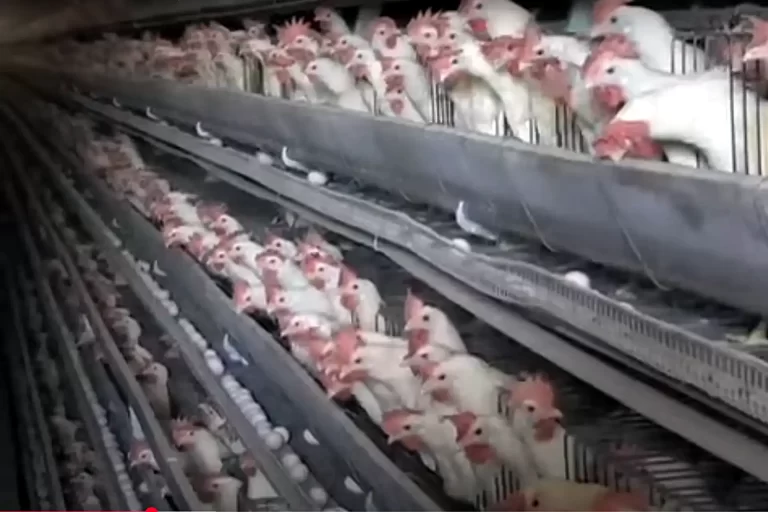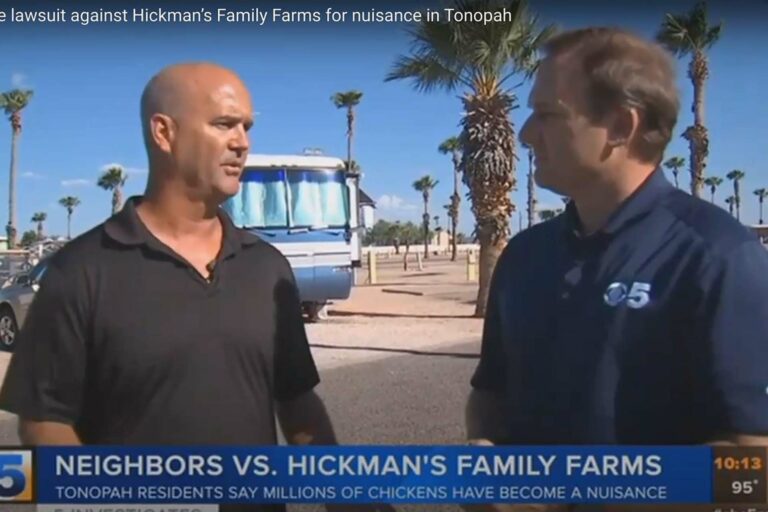In a devastating blow to Arizona’s poultry industry, Hickman’s Family Farms, the Southwest’s largest egg producer, has lost approximately 95% of its Arizona chickens—around six million birds—to a severe avian influenza (H5N1) outbreak. This crisis, which began in mid-May 2025, has forced the company to halt most operations for up to two years, lay off hundreds of employees, and face significant economic challenges. For Tonopah S.T.O.P.P. (Save Tonopah Oppose Poultry Plant), this outbreak underscores the profound risks of Hickman’s massive Concentrated Animal Feeding Operation (CAFO) in our community. This blog post details the outbreak, its consequences, and why it strengthens our resolve to protect Tonopah’s environment, health, and future.
The Outbreak: A Timeline of Events
The avian flu outbreak at Hickman’s Family Farms unfolded rapidly, devastating three of its four Arizona farms. Here’s a timeline based on available reports:
- May 15, 2025: Hens at one of Hickman’s West Valley farms began showing symptoms consistent with avian influenza. Swabs were sent to the University of Arizona for analysis, and the H5N1 strain was confirmed the following day.
- Mid-May 2025: Hickman’s implemented stringent biosecurity measures, including halting traffic between farms, isolating staff, and using lasers and air cannons to deter wild birds. Despite these efforts, the virus spread to two additional Maricopa County farms.
- May 27, 2025: The Arizona Department of Agriculture declared an animal disease emergency after a third commercial farm tested positive for avian flu, confirming the outbreak’s severity.
- May 30, 2025: Glenn Hickman, President and CEO, announced at a press conference that 95% of the company’s Arizona flock—approximately six million chickens—had been lost over two weeks. The company began clearing out the affected farms, a somber task involving the culling of infected and exposed birds.
- June 2025: Hickman’s projected a two-year recovery period to repopulate its flocks, anticipating significant layoffs among its 850 employees, including contract workers and state inmates. The company is working to secure alternative egg suppliers to maintain market supply.
Why This Outbreak Matters to Tonopah
Since 2014, Tonopah S.T.O.P.P. has opposed Hickman’s CAFO due to its environmental and health impacts, including ammonia emissions, volatile organic compounds (VOCs), and threats to air quality in the Phoenix metropolitan area. The 2025 avian flu outbreak amplifies these concerns, highlighting the vulnerabilities of industrial-scale poultry operations in our small community. Here’s why this crisis is a wake-up call:
- Environmental Risks: The culling of six million birds and the cleanup of affected farms raise concerns about potential environmental contamination. Decomposing birds and waste could release pollutants, exacerbating the air quality issues Tonopah already faces from Hickman’s operations.
- Health Threats: The H5N1 strain, while not easily transmissible to humans, poses risks to workers handling infected birds. Tonopah residents, already burdened by odors and flies from the CAFO, now face heightened concerns about disease spread, especially given reports of H5N1 in local wildlife like sparrows, mice, and squirrels.
- Systemic Vulnerabilities: The outbreak’s rapid spread, despite biosecurity measures, reveals the challenges of containing airborne viruses in large-scale facilities. Glenn Hickman noted that air intake for chicken barns is a critical gap, as wild birds carrying H5N1 cannot be fully excluded . This vulnerability threatens not only Hickman’s but also surrounding communities.
A Preventable Tragedy?
Hickman’s leadership has called the outbreak a “tragedy that did not have to happen,” pointing to the lack of access to an H5N1 vaccine in the U.S. European countries have successfully used vaccines to control avian flu, but in the U.S., regulatory hurdles and lobbying from the meat poultry industry have delayed rollout. Glenn Hickman noted that a vaccine produced by Zoetis is exported but not yet available domestically, leaving egg producers like Hickman’s unprotected . This delay raises questions about industry priorities and regulatory oversight, issues Tonopah S.T.O.P.P. has long highlighted in our advocacy for stricter CAFO regulations.
The outbreak also follows a pattern of challenges at Hickman’s, including fires in 2019 and 2021 that destroyed barns and killed over 165,000 hens. These incidents, combined with the avian flu crisis, underscore the inherent risks of operating a facility with up to 12 million chickens in Tonopah .
Economic and Social Impacts
The loss of 95% of Hickman’s Arizona flock—roughly six million birds—has far-reaching consequences:
- Economic: Hundreds of employees face layoffs as the company scales back operations for two years. This affects not only full-time staff but also contract workers and state inmates employed by the farm.
- Egg Supply: While Hickman’s downplayed market impacts due to its share of national production, local supply chain experts predict egg price hikes.
- Recovery Timeline: Rebuilding the flock will take approximately 20 months, leaving the region’s egg industry in limbo.
Our Call to Action
Tonopah S.T.O.P.P. sees this outbreak as a critical moment to demand accountability and reform. The scale of Hickman’s operations amplifies risks to our community, from air pollution to disease outbreaks. We urge:
- Regulatory Oversight: The Arizona Department of Agriculture and federal authorities must prioritize vaccines and stricter biosecurity standards for CAFOs to prevent future outbreaks.
- Transparency: Hickman’s must provide clear updates on cleanup efforts and environmental safeguards to protect Tonopah’s air and water quality.
- Community Advocacy: Residents must unite to push for sustainable alternatives to industrial poultry farming.
How You Can Help
Join Tonopah S.T.O.P.P. in protecting our community from the dangers of Hickman’s CAFO:
- Donate: Fund our advocacy for cleaner air, safer practices, and a healthier Tonopah. Visit tonopahstopp.com to contribute.
- Get Involved: Sign up for our campaigns to address health risks, environmental impacts, and safety gaps. Join us on our website.
- Spread the Word: Share this post to raise awareness and build support for our cause.
Conclusion
The avian flu outbreak that decimated 95% of Hickman’s Arizona flock is a tragedy with deep implications for Tonopah. It highlights the fragility of industrial farming and the urgent need for preventive measures like vaccines and enhanced regulations. At Tonopah S.T.O.P.P., we are committed to turning this crisis into an opportunity for change. Let’s stand together to demand a safer, healthier future for our community. Join us today at tonopahstopp.com.
Sources
- Poultry at Hickman’s Family Farms tests positive for avian flu – ABC15
- Hickman’s Family Farms loses 95% of Arizona chickens to bird flu – AZFamily
- Hickman’s Egg Ranch loses 95% of its chickens to bird flu: What’s next – Fox10 Phoenix
- Largest Egg Producer in Southwest Partially Shutdown: What to Know – Newsweek
- Hickman’s just lost 95% of Arizona chickens to bird flu and says it will take 2 years to rebuild – KJZZ
- Hickman’s Family Farms lost about 95% of its chickens to an avian flu outbreak – Axios Phoenix
- Arizona Egg Titan Hickman’s Loses 95% of Chickens to Bird Flu Scourge – Hoodline
- Largest egg producer in Southwest loses 95% of its chickens in Arizona to bird flu – KKTV
- Hickman’s Family Farms Home – Hickman’s Family Farms
- Bird flu hits 2 egg farms owned by Hickman Family Farms – KTAR
- YouTube: Hickman’s Family Farms loses 95% of chickens to bird flu – YouTube



